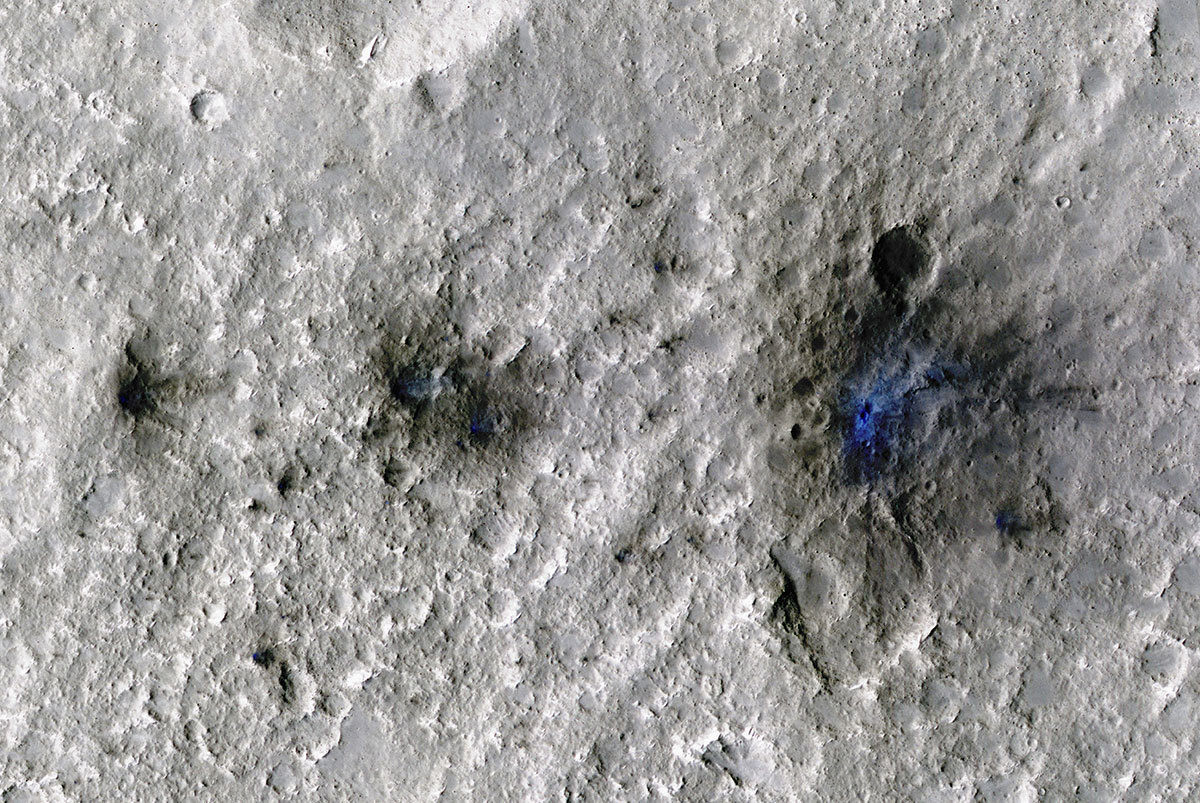 As reported by NASA.
As reported by NASA.
- Women in Physics Lecturer Associate Professor Katarina Miljkovic is a co-author on a recently published paper on impacts by meteroids crashing on Mars as detected by the NASA InSight lander.
NASA’s InSight lander has detected seismic waves from four space rocks that crashed on Mars in 2020 and 2021. Not only do these represent the first impacts detected by the spacecraft’s seismometer since InSight touched down on the Red Planet in 2018, it also marks the first time seismic and acoustic waves from an impact have been detected on Mars.
A new paper published Monday 19 Sep in Nature Geoscience details the impacts, which ranged between 53 and 180 miles (85 and 290 kilometers) from InSight’s location, a region of Mars called Elysium Planitia.
The first of the four confirmed meteoroids – the term used for space rocks before they hit the ground – made the most dramatic entrance: It entered Mars’ atmosphere on Sept. 5, 2021, exploding into at least three shards that each left a crater behind.
Then, NASA’s Mars Reconnaissance Orbiter flew over the estimated impact site to confirm the location. The orbiter used its black-and-white Context Camera to reveal three darkened spots on the surface. After locating these spots, the orbiter’s team used the High-Resolution Imaging Science Experiment camera, or HiRISE, to get a color close-up of the craters (the meteoroid could have left additional craters in the surface, but they would be too small to see in HiRISE’s images).
“After three years of InSight waiting to detect an impact, those craters looked beautiful,” said Ingrid Daubar of Brown University, a co-author of the paper and a specialist in Mars impacts.
“Impacts are actually a really beautiful way of validating our previous guesses about the make-up of the interior of Mars, because we can tell how big the rock was that created that impact, so we know how much energy it would have had on impact,” said AIP Women in Physics lecturer, Associate Professor Katarina Miljkovic, who is a co-author on the paper and the only Australian working on the NASA InSight mission.
“And then we can connect the dots about the material that must be under the surface which the seismic waves passed through, to give us a greater insight into the structure of Mars.”
Read the full NASA media release here.
Read more about Prof Miljkovic’s participation in an SMH article here.
Photo credit: NASA/JPL-Tech/University of Arizona.
